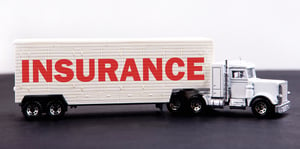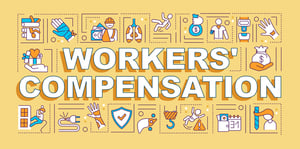 Workers' Compensation (WC) Insurance pays for medical costs and lost wages for work-related injuries and deaths. For example, if someone falls and is injured on the job, is exposed to dangerous chemicals at work, or is injured by faulty machinery while working, they will – in all probability - be covered by WC. But what about workers who are injured or killed by workplace violence?
Workers' Compensation (WC) Insurance pays for medical costs and lost wages for work-related injuries and deaths. For example, if someone falls and is injured on the job, is exposed to dangerous chemicals at work, or is injured by faulty machinery while working, they will – in all probability - be covered by WC. But what about workers who are injured or killed by workplace violence?
What is PA Workers' Compensation Insurance?
PA Workers' Compensation is a no-fault insurance most employers are required to carry in Pennsylvania. "The workers' compensation system protects employees and employers," the PA Department of Labor & Industry (DLI) explains. "Employees receive medical treatment and are compensated for lost wages associated with work-related injuries and disease, and employers provide for the cost of such coverage while being protected from direct lawsuits by employees."
What is Workplace Violence?
Workplace violence can involve employees, clients, customers, or visitors. "Workplace violence is the act or threat of violence, ranging from verbal abuse to physical assaults directed toward persons at work or on duty," according to the National Institute for Occupational Safety and Health (NIOSH). "The impact of workplace violence can range from psychological issues to physical injury or even death."
Here are some examples of workplace violence:
- Physical and verbal altercations among employees
- Criminal activities, such as robbery
- Physical confrontations between customers and employees
- Active shooting incidents
- Violence that occurs between an employee and their partner that happens in the workplace
Service occupations, such as health care, law enforcement, education, and retail, are most at risk for workplace violence, but violence can occur anywhere. According to the U.S. Department of Labor, acts of violence are the third-leading cause of fatal occupational injuries in the U.S.
According to the NIOSH, 20,050 workers in the private industry experienced trauma from nonfatal workplace violence that resulted in days away from work in 2020. 76% of those injuries occurred in the healthcare and social assistance industry, and 22% required 31 or more days away from work. In 2020, 392 workers were workplace homicide victims. 30% of them were performing retail-related tasks.
Does Workers' Compensation Insurance cover Workplace Violence?
Workers' Comp is a no-fault insurance, which means it doesn't matter who or what caused the injury. However, for an injury or death to be covered under WC, it must occur in the "course and scope of employment."
In other words, for an injury or death to be covered under Workers Comp, it must be directly related to employment. Therefore, injuries may not be covered under WC if it's a personal dispute unrelated to employment.
While each incident is unique, the following scenarios will typically be covered under WC:
- A police officer is shot in the line of duty.
- A customer attacks an employee because they are unhappy with your company's return policy.
- Co-workers fight over how a work task should be performed.
- Psychological injuries are caused by witnessing a violent event at work.
The following scenarios are typically not covered under WC:
- Someone who has a personal issue with an employee comes into their workplace and causes injury.
- An employee is attacked by someone whom they have a criminal relationship with.
- A husband attacks his wife at her place of employment.
- Two employees fight over a personal matter not related to work.
Are You Paying Too Much for Worker's Compensation Insurance?
At American Insuring Group, we offer cost-effective worker's compensation insurance from many competing insurance companies. We'll work hard to get you the best price on quality insurance for all your business needs.
Call us today at (800) 947-1270 or (610) 775-3848, or connect with us online.




 In Pennsylvania, almost all employers are required to carry
In Pennsylvania, almost all employers are required to carry  As an independent truck owner/operator or small fleet owner,
As an independent truck owner/operator or small fleet owner,  In Pennsylvania, almost every employer is required to carry
In Pennsylvania, almost every employer is required to carry  Minimizing injuries in the workplace benefits everyone – from a better quality of life for employees to higher productivity and lower
Minimizing injuries in the workplace benefits everyone – from a better quality of life for employees to higher productivity and lower  Workplace injuries do more than increase your
Workplace injuries do more than increase your  No
No  Would you be surprised to discover that technology used in sci-fi movies, such as Iron Man, could actually help reduce your
Would you be surprised to discover that technology used in sci-fi movies, such as Iron Man, could actually help reduce your  Most employers in Pennsylvania are required to have
Most employers in Pennsylvania are required to have 



